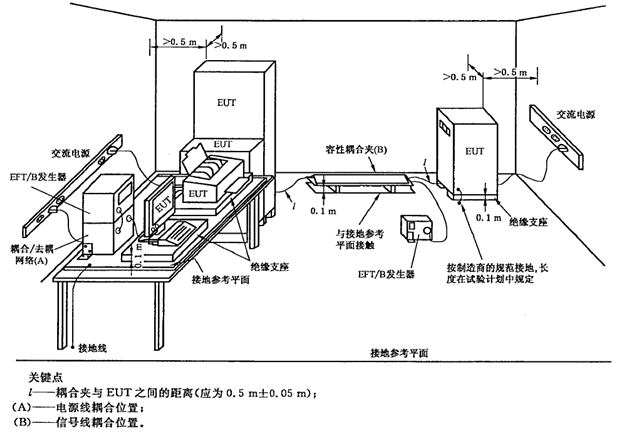The immunity test of electrical fast transient pulse group is an experiment that couples the pulse group composed of many fast transient pulses to the power supply port, control port, signal port and grounding port of electrical and electronic equipment. The main points of the test are high amplitude of transient, short rise time, high repetition rate and low energy.
The GB/T17626.4 deals with the immunity requirements and test methods of electrical and electronic equipment for repetitive electrical fast transients. In addition, the range of test grades is defined and the test procedure is confirmed. The purpose of this paper is to determine a common evaluation basis which is repeatable for evaluating the performance of power ports, signals, control ports and grounding ports of electrical and electronic equipment when they are affected by electrical fast transient (pulse group) interference.
Test Grade
Open Circuit Output Test Voltage and Pulse Repetition FrequencyOpen circuit output test voltage and pulse repetition frequency Open circuit output test voltage and pulse repetition frequency | ||||
| Grade | Power supply port, protect the ground(PE) | In the I / O (input/output) signal, data and control port | ||
| Voltage Peak Value/kV | Repetition Frequency /kHz | Voltage Peak Value/kV | Repetition Frequency /kHz | |
| 1 | 0.5 | 5 or 100 | 0.25 | 5 or 100 |
| 2 | 1 | 5 or 100 | 0.5 | 5 or 100 |
| 3 | 2 | 5 or 100 | 1 | 5 or 100 |
| 4 | 4 | 5 or 100 | 2 | 5 or 100 |
| × | Particular | Particular | Particular | Particular |
2. Test Method

Schematic Diagram of Test Configuration of Electrical Fast Transient Pulse Test
3. Conclusion of Test Result
The test results should be classified according to the loss of function or degradation of performance of the tested equipment. The relevant performance level shall be determined by the manufacturer of the equipment or the demand-side of the test, or by the agreement of the manufacturer and the buyer of the product. It is proposed that the classification be based on the following requirements:
A) Normal performance within the limits set by the manufacturer, the entrusting party or the procuring party;
B) Temporary loss or reduction of function or performance, but self-recovery after cessation of harassment without the need of intervention by the operator;
C) Function or performance is temporarily lost or reduced, but operator intervention is needed to recover.
D) Unrecoverable loss of function or reduction of performance due to equipment hardware or software damage or data loss.